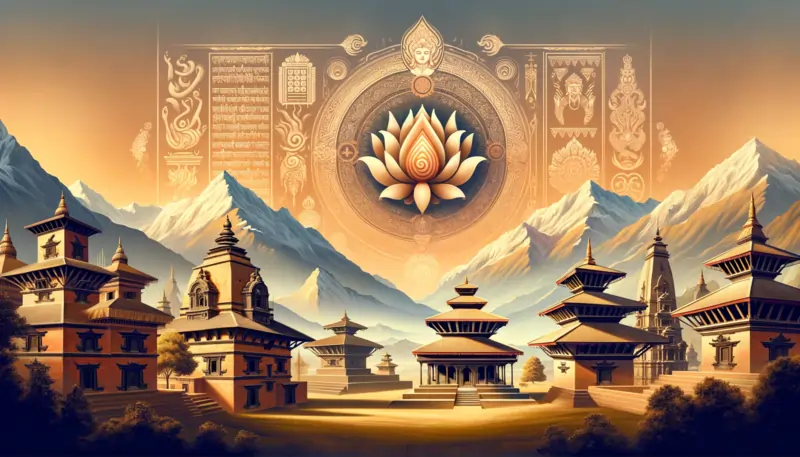Guardians of Vajrayana: The Esteemed Bajracharya Priests
Bajracharyas are the revered married priests within Nepal’s Newar community, known for their profound understanding of the Newar Buddhist Vajrayana traditions. Holding the highest rank among Newar Buddhist castes, they serve as the keepers of ancient spiritual practices. Their role as custodians of Buddhist rituals and teachings is not just a job; it’s a way of life, handed down through generations and steeped in deep spiritual significance.
Manjushri’s Legacy: Mythological Foundations
The mythological roots of the Bajracharya lineage are as fascinating as they are ancient. Guruju Badri Ranta Bajracharya’s writings reveal that the first Bajracharya was Manju Dev Acharya, also known as Manjushri. This legendary figure is said to have traveled from the Panchasirsa hillock of Great China, bringing with him profound spiritual knowledge and practices. Upon his arrival in ancient Nepal, Manju Dev Acharya drained the holy lake of Nagarasahrada, laid the foundations of Nepal Mandal, and introduced Buddhism to the region. His actions didn’t just reshape the geography; they set in motion a spiritual tradition that would endure for centuries.
Shantikar Acharya: Historical Beginnings
Moving from myth to recorded history, the tale of the Bajracharyas’ origins continues with King Prachanda Dev. Historical records reveal a captivating story of King Prachanda Dev from Gauda (modern-day Bengal, India), who journeyed to Nepal in the 5th century. His purpose was to venerate the Swayambhu Dharmadhatu, a mesmerizing flame emanating from a lotus sown by the first Buddha, Vipaswi. Captivated by the sight of the Swayambhu Dharmadhatu and its radiant light, he experienced a profound spiritual transformation. He chose to renounce his royal life to embrace the path of a Vikshu (monk). Following this, he underwent the ritual of Acharyabhishek under the guidance of Gunakar Acharya, subsequently adopting the name Shantikar Acharya. He holds the distinction of being recognized as the first official Bajracharya. In a significant act of devotion, he was granted the honor of covering the Swayambhu Dharmadhatu’s dazzling luminous presence within the Swayambhu Maya Chaitya, further sanctifying this sacred site.
Wak Bajra Bajracharya: Luminaries of the 5th Century
The Bajracharya tradition was not only shaped by its mythical and early historical figures but also by luminaries like Wak Bajra Bajracharya from Kwa-Bahal, Maitripur Mahavihar, in 550AD. He is noted for his foundational role in establishing Maitripur Mahavihar. He is credited with the remarkable feat of constructing the Si Gha chaitya, a task he is said to have accomplished by levitating from Kasi (present-day India) through his profound meditation and spiritual practices. Additionally, Wak Bajra Bajracharya contributed numerous Buddhist scriptures, including the notable Rakta Varna. His dedication to deep meditation within Kwa Bahal, Maitripur Mahavihar is so profound that it is believed he remains in a state of meditation to this day.
In Conclusion: A Legacy Carved in Time
The roots of the Bajracharya community delve deep into Nepal’s spiritual soil, tracing back to the 5th century Licchavi Dynasty, a golden era when Buddhism and its rituals flourished. The Bajracharyas, through their unbroken lineage, continue to be the torchbearers of this sacred tradition, guiding the Newar community and beyond in their spiritual journey. Their story is not just one of historical significance but a living tradition that continues to inspire and guide spiritual seekers in the heart of Nepal.
References
- Buddhism in Nepal, Badri Ratna Bajracharya
- Prasiddha Bajracharya, Badri Ratna Bajracharya

